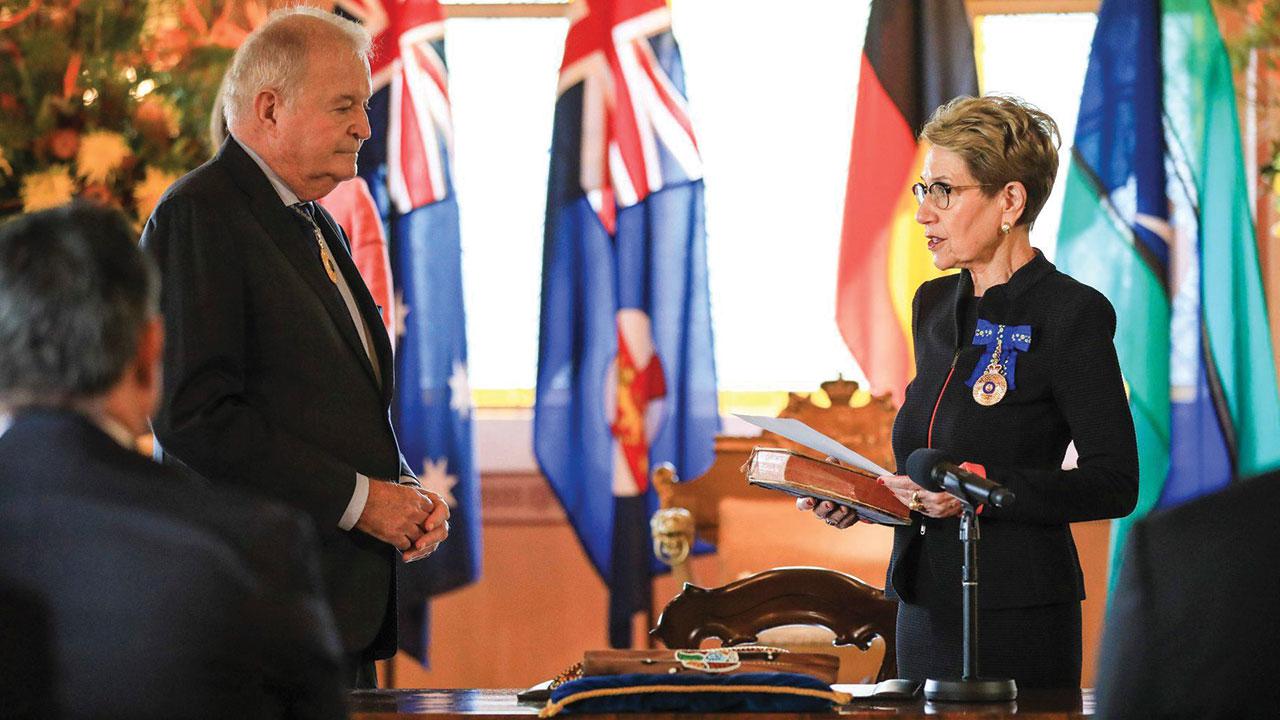
A new Governor was sworn in for New South Wales yesterday. Margaret Beazley takes over the role after former Governor David Hurley agreed to become our next Commonwealth Governor-General.
Governor Beazley stated in her swearing-in address:
I want to use my time in service of the community to advance the opportunities for New South Wales, both domestically and internationally. Education, in my view, is critical to leveraging those opportunities, especially for our young people.
With the well documented decline in trust of politicians and governance institutions, we thought it is timely to reflect on the history and role of the Governor of New South Wales, emphasising the non-political checks and balances and the purpose being above politics to represent the whole community.
The first Governor of NSW
Arthur Phillip arrived in NSW in 1788 and as Governor had to do everything. He brought with him the English statue law and common law. Governor Phillip had been given instructions by King George III on how to run the penal colony and to treat the Aboriginal peoples well. Because communication with the Crown was limited it meant the early NSW Governors had almost autocratic power.
This changed in 1823, when the New South Wales Judicature Act was passed in Britain and provided a Legislative Council and the beginnings of a Parliament in NSW. The penal colony became a settled colony with the establishment of a civil government, civil courts and trial by jury. 5 to 7 members of the Council were appointed to advise the Governor and taxes could only be levied for local needs. This was under the watch of Governor Brisbane.
By 1855 NSW had enacted a Constitution. This meant that the Governor no longer sat in the legislature (the parliament). Two thirds of the parliament were elected by people living in NSW that owned property. At this point Governor FitzRoy provided checks and balances for the legislature and retained the prerogative to withhold assent of a bill.
It wasn’t until after Federation in 1901 that the New South Wales Constitution Act 1902 was enacted and New South Wales legislative powers were complete and no longer subject to the British Parliament. Governor Rawson was in the role at this time.
We have had many beloved Governors since that time, including Marie Bashir. Governor Bashir retained the role for 13 years and has been described as "a powerful advocate for the powerless".
The role of the Governor today is constitutional, ceremonial and as a significant community patron supporting major charities such as in mental health, education and Aboriginal communities. As a check and balance on the legislature, the Governor must sign all bills into legislation. The Governor also chairs the meetings of the Executive Council. While the Governor normally acts on the advice of Government, there are constitutional conventions that do allow the Governor to take independent action under some circumstances. This can include situations such as if the Premier can’t control the Parliament to pass legislation.
The biggest intervention by a Governor in NSW was in 1932 when Governor Game dismissed the Premier Jack Lang. The Governor was using his reserve powers after it was alleged that the Premier had acted illegally in withholding NSW funds from the Commonwealth Government during a recession. Another time something similar occurred in Australia was when the Governor-General dismissed Prime Minister Gough Whitlam.
CEFA welcomes the new Governor of New South Wales.
Image attributed to the Governor of New South Wales Facebook

